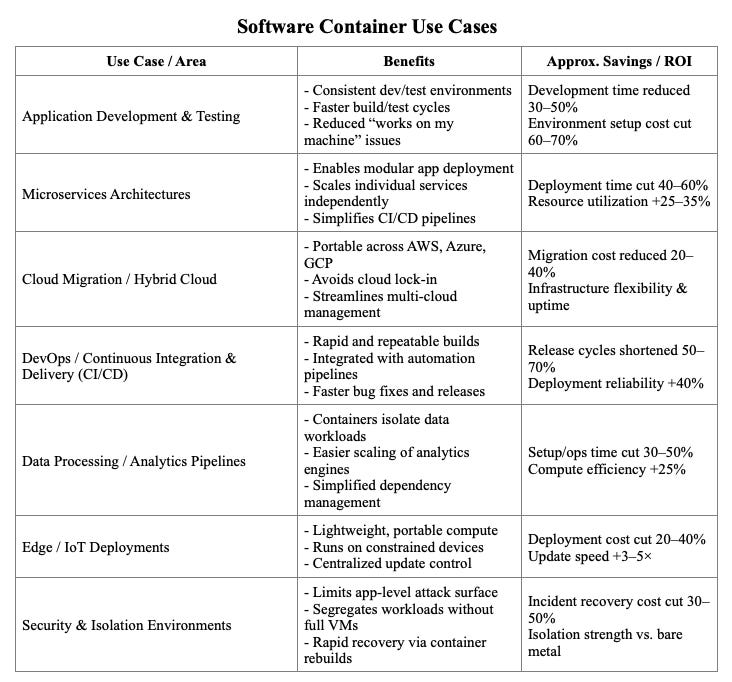Understanding Software Containerization
Why It is Important and How it is a Saver

Computing enterprises must constantly seek ways to increase efficiency, reduce costs, and accelerate time to deliver services. Software containerization sounds like another phrase for some type of computerized jail sentence, but it has emerged as a pivotal technology for achieving objectives related to saving money and improving performance. An understanding of the fundamentals of containerization, its business advantages, and its strategic implications is helpful for IT and non IT leadership to realize and appreciate.
Software containerization is a method of packaging applications and their dependencies into lightweight, portable units called containers. Unlike traditional virtualization, which relies on running multiple operating systems on a single physical server, containers share the host operating system’s kernel, resulting in minimal overhead and immediate cost savings. Each container condenses everything an application needs to run (code, runtime, libraries, and configuration files) guaranteeing consistency across different computing environments.
The primary benefits of using Containers include:
Enhanced Agility, and Speed
Containerization empowers development teams to build, test, and deploy applications more rapidly. By eliminating environment inconsistencies, containers enable faster software releases and updates, aligning with agile business strategies and reducing time to market.
Operational Efficiency
Containers are inherently lightweight, requiring fewer computing resources than traditional virtual machines. This leads to higher server utilization rates, lower infrastructure costs, and improved scalability.
Portability and Flexibility
Containers can run consistently across diverse environments, whether on-premises, in public or private clouds, or in hybrid scenarios. This portability simplifies migration strategies/vendor lock in, enables multi-cloud deployments.
Improved Security and Asset Isolation
While containers share the host OS kernel, each container operates in an isolated environment. This isolation helps contain security vulnerabilities and limits the blast radius of potential breaches, an important factor in risk management and compliance.
Digital transformation and evolution initiatives often rely on the ability to innovate quickly and respond to market changes as they happen. Containerization can support these goals by facilitating micro-services architectures, where complex applications are broken down into smaller, independently deployable services. This approach not only increases development velocity but also enables granular scaling, allowing organizations to allocate resources dynamically based on demand.
From a financial perspective, containerization can potentially yield significant returns on investment (ROI). Reduced infrastructure requirements, lower maintenance costs, and streamlined operations contribute to decreased total cost of ownership (TCO). The ability to leverage cloud-native technologies and automate deployment pipelines can unlock new revenue streams and support business growth. Organizations adopting containerization are often better positioned to innovate, scale, and adapt to changing market conditions.
Business Leaders evaluating containerization should consider several factors:
Talent and Skills:
Successful container adoption requires training IT teams and investing in DevOps practices.
Compliance and Security:
While containers offer isolation, governance and monitoring are required to mitigate risks.
Integration with Legacy Systems:
A phased approach may be necessary to integrate containers with existing and often outdated infrastructure.
Vendor Ecosystem:
Selecting the right platform (e.g., Docker, Kubernetes) and cloud partners is crucial for long-term success.
Software containerization is more than intimidating technical mumbo jumbo, it is a strategic weapon for modern enterprises. By delivering agility, operational efficiency, and cost savings, containers help organizations to accelerate digital transformation and maintain a competitive edge. For non-technical leaders, understanding the business and financial implications of containerization is helpful when making informed decisions and driving sustainable growth in an increasingly software-driven world. In short, containers are important to understand, if only for their opportunity to save time and money.
Disclaimer: The information provided in this newsletter is for informational purposes only and is provided as a commonsense approach based on real life experiences. Any actions you take based on the information in this newsletter are your responsibility.


